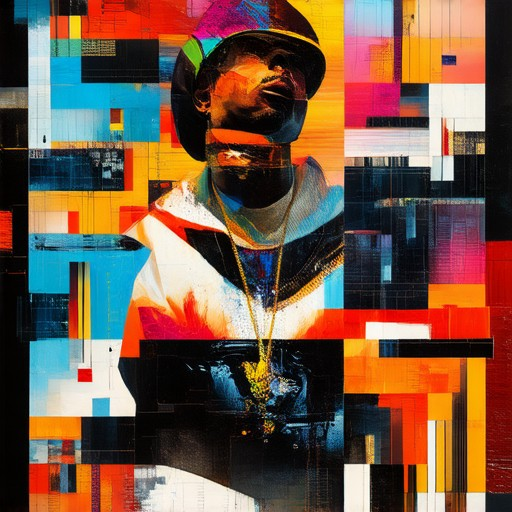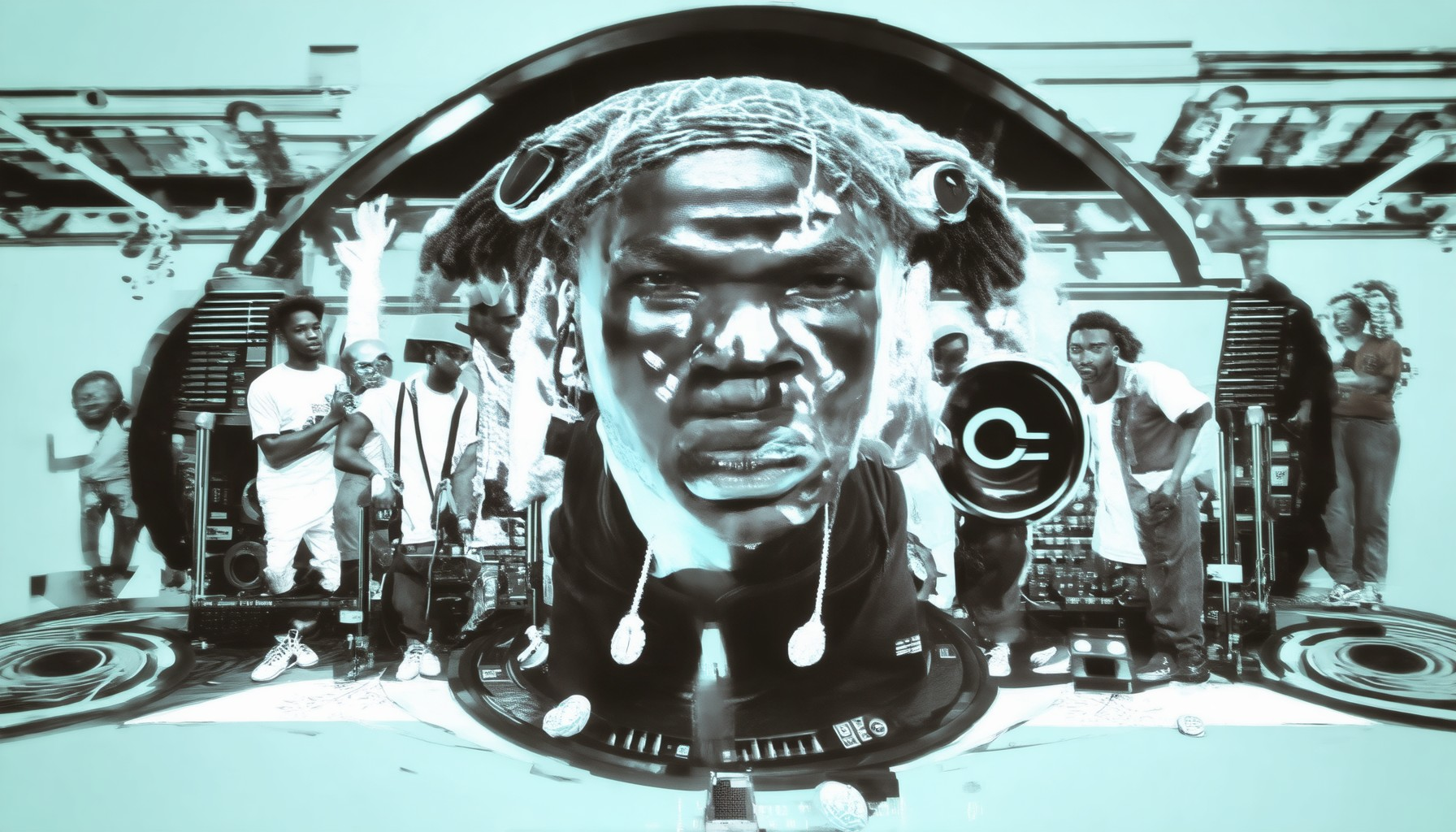Music has always been a reflection of the cultural shifts and societal changes taking place around it, and nowhere is this truer than in the evolution of hip hop beat movements. Over the years, these dynamic rhythms and innovative production techniques have not only shaped the sound of modern music but have also played a pivotal role in influencing global culture and the way we produce and consume music today. From the foundational beats of early hip hop to the intricate layers of contemporary productions, the journey of hip hop beat movements is a testament to creativity, resilience, and the power of music to drive social and cultural transformation.
Key Takeaways
– Innovation in Rhythm and Sound Design: Hip hop beat movements have revolutionized music production, from boom bap drums to complex, layered modern beats, setting new standards for rhythm and sound design.
– Cultural Impact Beyond Music: These movements have influenced fashion, language, and social movements, embedding hip hop’s essence into everyday life and global culture.
– Technological Advancements: The pursuit of perfecting hip hop beats has driven innovations in music production tools, democratizing creation and empowering artists worldwide.
– Global Reach and Genre Fusion: Hip hop beats transcend borders, blending with local cultures to spawn subgenres like trap, lo-fi, and future beats, resonating universally.
– Support for Underground Scenes: Underground hip hop communities thrive on platforms like Bandcamp and SoundCloud, fostering experimentation and collaboration outside mainstream eyes.
– Rise of Prominent Producers: Iconic producers like Kanye West and J Dilla have redefined music production, inspiring new generations to push creative boundaries and explore unique sounds.

What Defines a Hip Hop Beat Movement?
A hip hop beat movement is characterized by its dynamic rhythm, soulful melodies, and thought-provoking lyrics, creating music that resonates deeply with audiences worldwide. These movements often emerge from specific cultural contexts, blending genres like funk, jazz, and electronic beats to create something entirely unique. They serve as a platform for artists to express social commentary, personal struggles, and cultural perspectives, making them more than just music—they become a reflection of their time and place.
Key elements defining a hip hop beat movement include:
- Rhythm and Tempo : A driving bassline and snappy drum patterns form the backbone, giving the tracks energy and momentum. The rhythm often incorporates offbeat timing, creating a sense of urgency and intensity.
- Melodic Elements : Soulful vocals, catchy hooks, and intricate melodies add emotional depth and catchiness. These elements can range from smooth, R&B-style singing to raw, unfiltered rapping.
- Lyrics and Storytelling : Lyrics frequently tackle social issues, personal experiences, and cultural themes, providing a narrative that connects with listeners on a personal level. Artists often use storytelling to convey messages that resonate beyond the music itself.
- Cultural Impact : These movements go beyond music, influencing fashion, art, and social trends. They often bring together diverse communities, fostering a sense of unity and shared identity.
- Innovation and Experimentation : Beat movements thrive on pushing boundaries, experimenting with new sounds, and blending genres to create something fresh and original. This innovation keeps the movement evolving and prevents it from becoming stale.
- Competitive Landscape : While rooted in authenticity, these movements often compete for attention in a crowded market. Platforms like Complex , XXL , and HipHopDX highlight the most impactful artists and trends, helping to shape public opinion.
At its core, a hip hop beat movement is about more than just beats—it’s about the stories they tell, the cultures they represent, and the connections they foster. By embracing these elements, artists and fans alike create something timeless that continues to influence future generations.
How Do Hip Hop Beat Movements Shape the Sound of Modern Music?
Modern music owes a significant debt to the innovative beats and rhythmic foundations established by hip hop movements. These movements have not only redefined genres but also influenced global music production, composition, and cultural expression.
Innovative Production Techniques
Hip hop beat movements have introduced groundbreaking production techniques that have become staples in contemporary music. Drum machines, sample-based loops, and layered percussion have transformed tracks into dynamic, bass-driven compositions. Artists like J Dilla and DJ Premier pioneered these methods, creating intricate rhythms that inspire producers worldwide.
Cultural Impact
These movements have transcended boundaries, blending elements of jazz, funk, reggae, and electronic music to create a rich tapestry of sounds. The rise of digital audio workstations (DAWs) has further democratized the creation of these beats, allowing artists to experiment freely and push creative limits.
Global Influence
From trap music in Atlanta to lo-fi hip hop in Tokyo, the influence of these movements is evident. Labels like High Serf and 88rising have championed new artists who draw inspiration from classic hip hop beats, proving that the genre’s legacy continues to evolve.
Future Directions
As technology advances, the possibilities for hip hop-influenced music continue to expand. Producers are now experimenting with AI tools to create unique beats, ensuring that the genre remains at the forefront of innovation. Platforms like SoundCloud and YouTube have also provided new avenues for artists to share their music globally.
Abstract Hip Hop, for instance, has embraced these advancements, showcasing how experimental beats can coexist with traditional structures. By pushing boundaries, these movements ensure that modern music remains fresh and vibrant, constantly evolving to meet the demands of the ever-changing musical landscape.

What Are the Key Elements That Define a Hip Hop Beat Movement?
The hip hop beat movement is a vibrant and dynamic aspect of music culture, characterized by its unique blend of rhythm, melody, lyrics, storytelling, and cultural impact. Below are the essential components that define this impactful phenomenon:
- Rhythm and Tempo :
The heartbeat of hip hop lies in its rhythmic patterns, often referred to as the “beat.” This element encompasses a variety of tempos, from the fast-paced energy of trap beats to the laid-back grooves of lo-fi hip hop. The use of off-beat timing and syncopation adds complexity, making hip hop music inherently danceable and infectious. - Melody and Hook :
While the beat is the foundation, melodies play a crucial role in creating memorable hooks and choruses. Artists like Kendrick Lamar and J. Cole have masterfully crafted catchy melodies that resonate long after the track ends. These melodic elements often serve as the backbone of the song’s emotional appeal. - Lyrics and Storytelling :
Hip hop lyrics are more than just words—they tell stories, convey emotions, and reflect the cultural zeitgeist. From Nas’s poetic narratives to Eminem’s raw introspection, the genre thrives on lyrical depth. Artists frequently use their music as a platform for social commentary, personal journeys, and cultural critique. - Cultural Impact and Social Commentary :
Beyond music, hip hop has become a powerful medium for cultural expression. It reflects societal issues, celebrates individual and collective achievements, and fosters community. The genre’s influence extends beyond music, shaping fashion, language, and even political discourse. - Innovation and Evolution :
What sets hip hop apart is its constant evolution. Whether it’s the fusion of jazz, funk, and electronic elements or the emergence of subgenres like cloud rap and drill music, hip hop continues to push boundaries. This innovation ensures that the genre remains fresh and relevant for new generations.
Explore these elements further on our cultural impact and rhythmic explorations pages.

How Do Hip Hop Beat Movements Influence Music Culture and Evolution?
Hip hop beat movements have been instrumental in shaping music culture, driving innovation, and redefining artistic expression across various genres. These movements have not only influenced the sound of modern music but also played a pivotal role in its cultural evolution.
- Innovation in Rhythm and Sound Design
Hip hop beat movements have consistently pushed boundaries in rhythm and sound design. From the early boom bap drums of the 1980s to today’s complex, layered productions, these movements have redefined what music can sound like. Artists like J Dilla and DJ Premier have elevated the art of sampling and beatmaking, creating timeless sounds that continue to inspire new generations. - Cultural Impact Beyond Music
Beyond music, hip hop beat movements have had a profound impact on popular culture. They’ve influenced fashion, language, and social movements, making hip hop more than just music—it’s a lifestyle. The beats themselves have become a universal language, resonating across different cultures and fostering connections between people. - Technological Advancements
The pursuit of perfecting hip hop beats has driven technological innovations in music production. Drum machines, synthesizers, and software tools have evolved to meet the demands of producers seeking to create unique sounds. This technological progress has democratized music creation, allowing artists from all backgrounds to experiment and innovate. - Global Reach and Fusion of Genres
Hip hop beat movements have transcended geographical boundaries, blending with local cultures around the world. This fusion has led to the emergence of subgenres like trap, lo-fi, and future beats, each bringing its own flavor while staying rooted in the core principles of hip hop. Artists from different regions have taken inspiration from these movements, creating music that resonates globally. - Rise of Underground Scenes
Many hip hop beat movements thrive in the underground, fostering a community of like-minded creators who push creative boundaries. Platforms like Bandcamp and SoundCloud have allowed these scenes to flourish, providing a space for experimentation and collaboration that might otherwise be overlooked by mainstream media.
These movements continue to evolve, pushing the boundaries of music and culture. They serve as a testament to the power of creativity and the enduring appeal of hip hop as a force for change and innovation.
How Do Hip Hop Beat Movements Influence the Evolution of Music Production?
Hip hop beat movements have played a pivotal role in shaping the evolution of music production, serving as a catalyst for innovation and cultural exchange. These movements have redefined how music is created, produced, and consumed, leaving an indelible mark on global audio landscapes.
The Role of Beat Movements
Beat movements in hip hop culture have historically served as a foundation for musical experimentation and artistic expression. From the early days of block parties to modern studio productions, these beats have become a cornerstone of music production, influencing everything from electronic dance music to contemporary pop.
Influence on Production Techniques
Hip hop beat movements have introduced groundbreaking production techniques that have been adopted across various music genres. Drum machines, sample-based compositions, and layered sound design have become standard tools in studios worldwide. Producers drawn to the raw energy of hip hop beats have pushed the boundaries of music creation, leading to the development of new sounds and styles.
Blending Genres and Cultures
One of the most significant contributions of hip hop beat movements is their ability to fuse diverse genres and cultures. African rhythms, Latin influences, jazz improvisation, and electronic elements have all found their way into hip hop productions, creating a rich tapestry of sound that continues to inspire musicians globally. This cultural fusion has led to the creation of hybrid genres like trap, lo-fi, and future beat music.
Technological Advancements
Hip hop beat movements have driven technological innovations in music production. The use of turntables, effects pedals, and digital audio workstations has revolutionized how music is made. Producers who emerged from the hip hop scene have been instrumental in developing software and hardware that has become essential tools for creators worldwide.
Cultural Impact Beyond Music
Beyond music, hip hop beat movements have had a profound impact on visual arts, fashion, and storytelling. The rhythmic complexity and storytelling nature of hip hop beats have influenced film scores, video games, and even advertising campaigns, further cementing their place in contemporary culture.
Rise of Prominent Producers
Many of today’s most celebrated music producers got their start in hip hop beat movements. Their mastery of rhythm, melody, and sampling has set new standards for music production, inspiring a new generation of artists to push creative boundaries and experiment with sounds.
Abstract Hip Hop stands at the forefront of this evolution, blending avant-garde production techniques with experimental sounds to create a unique auditory experience. Our platform is dedicated to exploring these innovations and showcasing the artists who are redefining music production through their craft.
Explore the history of hip hop and discover how these movements continue to shape the future of music production. Whether you’re a seasoned producer or a curious listener, Abstract Hip Hop offers insights into the creative processes that define this dynamic art form.

The Origins and Evolution of Hip Hop Beat Movements
Hip hop beat movements have evolved significantly since their emergence in the late 1970s, shaping global music culture and influencing countless genres. Below is a detailed exploration of their origins, key developments, and contemporary innovations.
Origins of Hip Hop Beats
Hip hop’s roots trace back to the late 1970s in the South Bronx, New York City. The movement began as a cultural phenomenon blending African American musical traditions, street culture, and social struggles. Key elements included breakdancing, graffiti art, and rapping, which quickly became central to the hip hop experience.
The foundational beats of hip hop often drew from Jamaican reggae and funk records, with DJs like Afrika Bambaataa and DJ Kool Herc pioneering the use of turntables to create loops and extended mixes. These early iterations laid the groundwork for what would become a global phenomenon.
Key Artists and Movements
During the 1980s, hip hop entered mainstream consciousness through artists like LL Cool J, Run-DMC, and The Beastie Boys. Their music incorporated heavy basslines, catchy hooks, and rhythmic rhymes, creating a distinct sound that resonated worldwide.
Simultaneously, abstract hip hop emerged as a more experimental branch, influenced by jazz, funk, and electronic music. Artists like Herbie Hancock, A Tribe Called Quest, and Flying Lotus pushed boundaries, incorporating live instrumentation and intricate beats.
Technological Advancements
As technology evolved, so did hip hop production. The rise of digital audio workstations (DAWs) in the 1990s allowed producers to create complex samples and layered tracks. This era saw the rise of producers like Kanye West, who revolutionized the genre with his innovative sampling techniques and emotional storytelling.
Modern hip hop has embraced a wide array of sounds, from trap beats to lo-fi hip hop. Platforms like YouTube and SoundCloud have democratized music creation, enabling independent artists to reach global audiences and fostering a vibrant underground scene.
Cultural Impact
Hip hop beats have transcended music, influencing fashion, film, and social movements. The genre’s emphasis on authenticity and storytelling has inspired a new generation of artists to push creative boundaries and challenge traditional norms.
Abstract hip hop, in particular, continues to innovate by blending genres and exploring unconventional sounds. Its influence extends far beyond music, shaping contemporary culture and inspiring artistic expression across various disciplines.
Conclusion
From its humble beginnings in the Bronx to its global dominance, hip hop beat movements have left an indelible mark on music and culture. By embracing innovation and staying true to its roots, hip hop remains a dynamic force driving creativity and social change around the world.





0 Comments